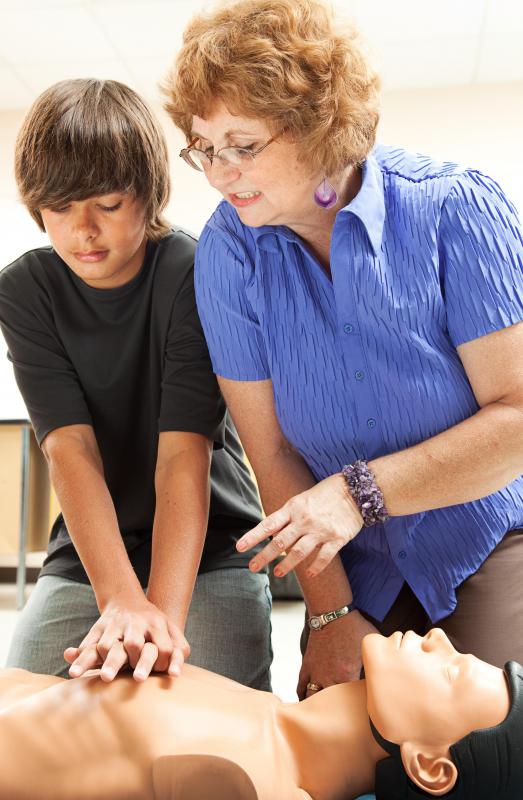At WiseGEEK, we're committed to delivering accurate, trustworthy information. Our expert-authored content is rigorously fact-checked and sourced from credible authorities. Discover how we uphold the highest standards in providing you with reliable knowledge.
What is BLS CPR Certification?
Basic Life Support (BLS) cardiopulmonary resuscitation (CPR) is a process by which laypersons who witness or first discover the victim of a heart attack, stroke, or choking may render life-saving assistance to the patient before the arrival of medical personnel. BLS CPR certification is training for a procedure in which the rescuer administers chest compressions and mouth-to-mouth breathing to maintain oxygenation and circulation of the collapsed patient’s bloodstream. Studies supporting BLS CPR certification show enhanced survival rates for heart attack victims who receive CPR within five minutes of the onset of the collapse. CPR, however, only occurs in about one-third of the nearly 250,000 annual, out-of-hospital, sudden cardiac arrests in the United States. The American Heart Association (AHA) issued guidelines for BLS CPR certification training in which it recommends a universal ratio of 30 compressions for every two breaths for single rescuers engaging in CPR on infants, children, or adults.
The sequence of events that rescuers learn in BLS CPR certification begins with the recognition of an unresponsive state of the patient. For an unresponsive adult, a rescuer should first request that another bystander call emergency services or call them himself if he is the only one present. Additionally, if an Automated External Defibrillator (AED) is available, he should recover and prepare to use it. In the next step, the rescuer opens the mouth, checks for a clear airway, and assesses whether the patient is still breathing. If there are no respirations, the rescuer then administers two breaths, followed by 30 chest compressions, and then uses the AED to shock the heart back into a normal rhythm.

For children or infants, the life support sequence is altered. According to current recommendations in BLS CPR certification courses, the airway and breathing assessment comes first, followed by five cycles of breaths and chest compressions before alerting emergency services. In most cases, the loss of consciousness in the pediatric population is the result of the child ceasing to breathe, not from a heart attack. BLS CPR may be all that is necessary to revive the patient before calling for an ambulance.

Even when BLS CPR occurs, studies by the AHA reveal that the process often is not done properly. Chest compressions are frequently too tentative and slow. Rescuers interrupt the compressions too much, leading to a drop in blood pressure and poor perfusion of blood into the brain and vital organs. Too much ventilation may be given, producing over-inflation of the stomach and lungs, which puts pressure on and reduces the production of the heart. For these reasons, the AHA regularly sponsors BLS CPR certification and training sessions to educate laypersons on the proper techniques in life support.
AS FEATURED ON:
AS FEATURED ON:












Discuss this Article
Post your comments